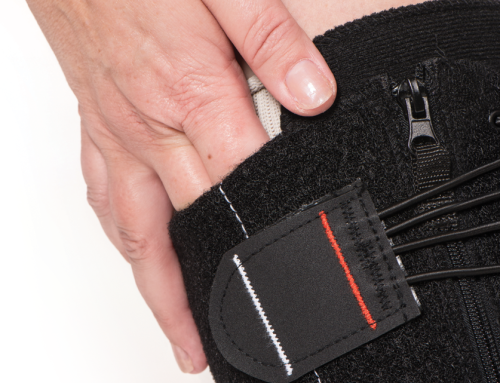When dispensing surgical dressings, the dressing size should be selected based on the size of the ulcer being treated. From a clinical standpoint, the dressing should cover the entire ulcer. From a compliance and payment standpoint, it is not appropriate to use a large dressing size when a smaller size was available that could have covered the same ulcer.
Measuring the Wound
I covered different techniques of wound measurement in our January 2020 blog. When determining the size of a surgical dressing, the surface area is of interest but more information is needed. The dressing needs to cover the entire ulcer, so, in addition to the surface area, it is also important to know the greatest ulcer width. For example, if an ulcer is 4″ long by 1″ wide, that equates to a surface area of 4 sq. inches. It would be incorrect to choose a 2″x2″ foam dressing for this ulcer. Even though the surface area of the 2″x2″ foam dressing is equal to the surface area of this ulcer, the foam dressing would not cover it entirely because the length of this ulcer is 4″ and the length of the dressing is 2″.
Dressing Size
The dressing needs to cover the entire length and the entire width of the ulcer so both need to be measured. The dressing length must be at least as long as the longest measurement of the ulcer and the dressing width must be at least as long as the longest measurement of the ulcer and dressing width must be at least as wide as the widest measurement of the ulcer. Therefore, the most appropriate size AMERX Foam Dressing in the above example is 4.25″ x 4.25″. This size would cover the entire 4″ x 1″ ulcer as the longest side of the dressing is longer than 4″ and the widest side of the dressing is wider than 1″.
In Conclusion
Choose a size that will cover the entire ulcer when selecting a surgical dressing for your patient, but do not use a large size when a smaller size is available that could have covered the entire ulcer.
DISCLAIMER: The information provided here is intended to educate health care providers regarding compliance for ICD, CPT, and HCPCS coding. The information provided does not guarantee reimbursement and is accurate to the best of our knowledge at the time of this publication. Coding guidelines can change and we encourage you to stay up to date. The existence of a code does not guarantee payment.

Dr. Jeffrey D. Lehrman, DPM, FASPS, MAPWCA, CPC, CPMA
Dr. Lehrman is a podiatrist practicing in Fort Collins, CO and operates Lehrman Consulting, LLC which provides consultation services regarding coding, compliance and documentation. Dr. Lehrman is a Certified Professional Coder and Certified Professional Medical Auditor. He serves as a staff liaison at the AMA CPT® Editorial Panel meetings where CPT codes are created, edited, and deleted. He is a Diplomate of the American Board of Foot and Ankle Surgery, Fellow of the American Society of Podiatric Surgeons, and is recognized as a “Master” by the American Professional Wound Care Association. Dr Lehrman is a Fellow of the American Academy of Podiatric Practice Management, Past Director of the American Professional Wound Care Association Board of Directors, and is a Past Chairman of the Board of the American Society of Podiatric Surgeons. Dr. Lehrman is also on the editorial advisory board of the journal WOUNDS.






